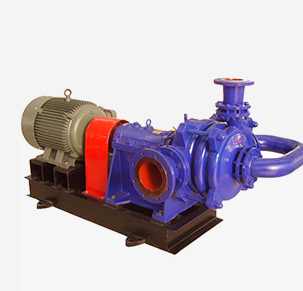Basque
- Afrikaans
- Albanian
- Amharic
- Arabic
- Armenian
- Azerbaijani
- Basque
- Belarusian
- Bengali
- Bosnian
- Bulgarian
- Catalan
- Cebuano
- Corsican
- Croatian
- Czech
- Danish
- Dutch
- English
- Esperanto
- Estonian
- Finnish
- French
- Frisian
- Galician
- Georgian
- German
- Greek
- Gujarati
- Haitian Creole
- hausa
- hawaiian
- Hebrew
- Hindi
- Miao
- Hungarian
- Icelandic
- igbo
- Indonesian
- irish
- Italian
- Japanese
- Javanese
- Kannada
- kazakh
- Khmer
- Rwandese
- Korean
- Kurdish
- Kyrgyz
- Lao
- Latin
- Latvian
- Lithuanian
- Luxembourgish
- Macedonian
- Malgashi
- Malay
- Malayalam
- Maltese
- Maori
- Marathi
- Mongolian
- Myanmar
- Nepali
- Norwegian
- Norwegian
- Occitan
- Pashto
- Persian
- Polish
- Portuguese
- Punjabi
- Romanian
- Russian
- Samoan
- Scottish Gaelic
- Serbian
- Sesotho
- Shona
- Sindhi
- Sinhala
- Slovak
- Slovenian
- Somali
- Spanish
- Sundanese
- Swahili
- Swedish
- Tagalog
- Tajik
- Tamil
- Tatar
- Telugu
- Thai
- Turkish
- Turkmen
- Ukrainian
- Urdu
- Uighur
- Uzbek
- Vietnamese
- Welsh
- Bantu
- Yiddish
- Yoruba
- Zulu
Telephone: +86 13120555503
Email: frank@cypump.com
Abu . 22, 2024 04:32 Back to list
Different Varieties of Slurry Pump Technologies for Efficient Material Transfer
Types of Slurry Pumps An Overview
Slurry pumps are essential for transporting slurries—mixtures of solids and liquids—within various industrial applications. These pumps are designed to handle abrasive materials, thick fluids, and large particle sizes, making them pivotal in sectors such as mining, construction, and wastewater treatment. Given the diverse nature of slurries, different types of slurry pumps are engineered to meet specific operational requirements. This article explores the primary types of slurry pumps and their applications.
1. Centrifugal Slurry Pumps
Centrifugal slurry pumps are the most commonly used type in various industries. They operate by converting rotational kinetic energy, provided by a rotating impeller, into hydrodynamic energy, resulting in fluid movement. The design of centrifugal pumps allows them to efficiently handle low-viscosity slurries with larger particle sizes. These pumps are often used in mining operations for transporting ore, tailings, and process slurries. Their simplicity in design and operation makes them a preferred choice for many applications, although they may not perform well with very viscous or thick slurries.
2. Positive Displacement Slurry Pumps
Unlike centrifugal pumps, positive displacement slurry pumps work by trapping a fixed amount of slurry within the pumping chamber and displacing it through the outlet. This type of pump is highly effective for high-viscosity slurries and slurries with high solid content. Positive displacement pumps are divided into two main types gear pumps and diaphragm pumps. Gear pumps use rotating gears to create flow, while diaphragm pumps utilize a flexible membrane to move the slurry. These pumps are commonly employed in applications such as food processing, chemical manufacturing, and wastewater treatment, where precise flow control is vital.
3. Submersible Slurry Pumps
types of slurry pumps

Submersible slurry pumps are designed to operate underwater, making them ideal for dewatering applications, particularly in mining, construction, and dredging projects. They are typically constructed with corrosion-resistant materials to withstand harsh environments. Submersible pumps can handle high concentrations of solids and are usually used in applications that require the removal of water or slurries from pits, sumps, or construction sites. Their design minimizes the need for priming, and they can operate efficiently even when submerged.
4. Vertical Slurry Pumps
Vertical slurry pumps are another important category and are particularly suitable for applications involving high solid content and variable flow rates. These pumps have a unique vertical design that allows them to be submerged in the slurry, reducing the risk of cavitation. Vertical pumps are often utilized in sump dewatering, mineral processing, and slurry transfer through long pipelines. Their configuration also helps save floor space and can facilitate easier maintenance compared to horizontal pumps.
5. Wear-Resistant Slurry Pumps
For operations dealing with highly abrasive slurries, wear-resistant slurry pumps are critical. These pumps are constructed from hard materials, such as high-chrome alloys or rubber, designed to withstand abrasive wear. They are essential in industries like mining and aggregates, where the pumping of abrasive materials can lead to rapid degradation of standard pumps. By using wear-resistant materials, these pumps can significantly reduce maintenance costs and extend operational lifetimes.
Conclusion
Selecting the right type of slurry pump is crucial for the efficiency and effectiveness of operations involving slurry transport. By understanding the unique features and applications of centrifugal, positive displacement, submersible, vertical, and wear-resistant slurry pumps, industries can make informed choices that enhance productivity and reduce downtime. As technology continues to advance, the development of innovative slurry pump designs is expected, catering to the evolving needs of various sectors while maintaining reliability in challenging conditions.
-
Horizontal Split Case Pump with GPT-4 Turbo | High Efficiency
NewsAug.01,2025
-
ISG Series Pipeline Pump - Chi Yuan Pumps | High Efficiency, Durable Design
NewsAug.01,2025
-
Advanced Flue Gas Desulfurization Pump with GPT-4 Turbo | Durable & Efficient
NewsJul.31,2025
-
ISG Series Vertical Pipeline Pump - Chi Yuan Pumps | Advanced Hydraulic Design&Durable Construction
NewsJul.31,2025
-
ISG Series Vertical Pipeline Pump - Chi Yuan Pumps | Energy Efficient & Low Noise
NewsJul.31,2025
-
pipeline pump - Chi Yuan Pumps Co., LTD.|High Efficiency&Low Noise
NewsJul.31,2025










